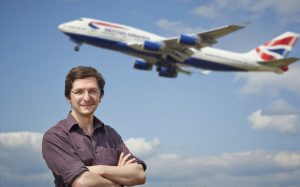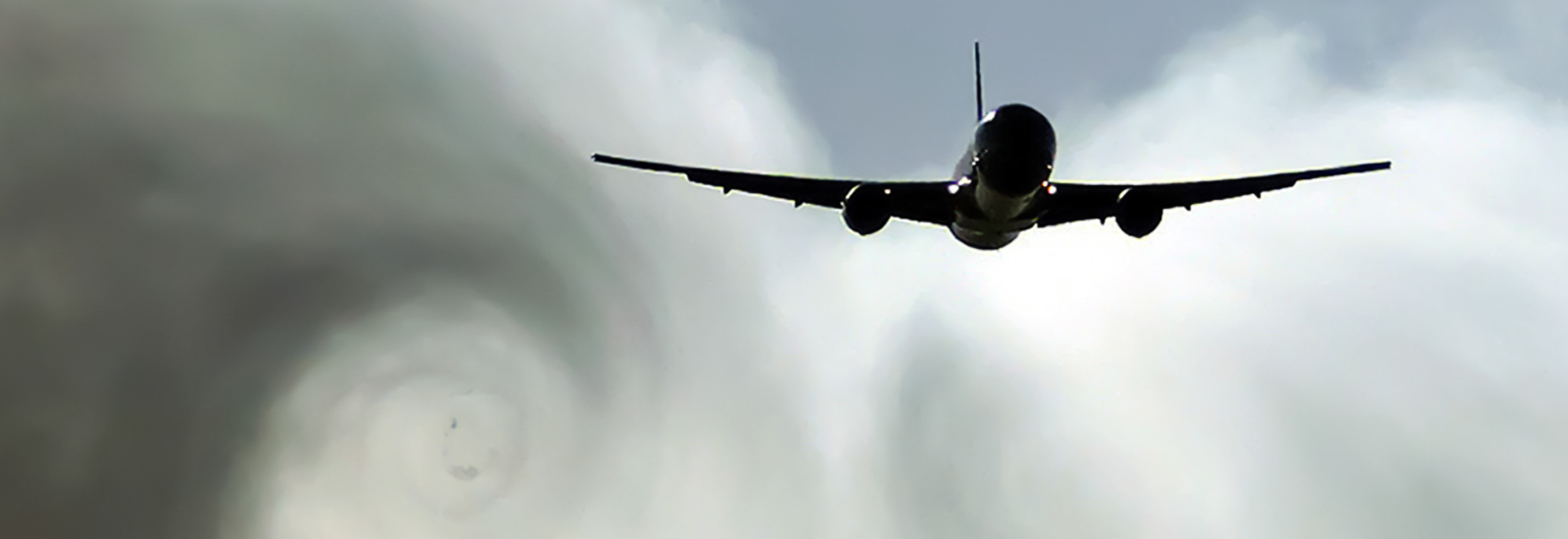Most of us will have experienced some sort of turbulence when flying – fortunately, it’s usually just a few annoying bumps, but on occasion it can create severe movement which can momentarily throw an aircraft out of control or even cause structural damage.
So, what is turbulence and why does it occur?
Turbulence is defined as an irregular motion resulting from whirls of air and vertical currents. Rough air occurs all around us – at ground level to way above cruising altitude – however the most frequent turbulence experienced by flyers has three main causes: mountains, jet streams and storms.
Research led by Paul Williams, Professor of Atmospheric Science at the University, has revealed that turbulence is increasing across the globe due to climate change, causing aircraft to burn more fuel and produce more emissions. This week, Professor Williams speaks to CONNECTED about how he is working with the aviation sector to find more sustainable ways to fly.
From postdoctoral researcher to world-leading atmospheric scientist, Professor Williams has been at the University since 2003.
“I was only supposed to stay here for three years on a contract, but I have been here ever since, which speaks volumes about what Reading means to me.
 “The quality of our students, the high calibre of our faculty and support staff, and our beautiful green campus are just a few of the things that keep me at the University,” he reflected.
“The quality of our students, the high calibre of our faculty and support staff, and our beautiful green campus are just a few of the things that keep me at the University,” he reflected.
Professor Williams’ current research projects include investigating how to make better forecasts of turbulence for the aviation sector, and calculating how much worse turbulence is going to become because of global warming.
“I’m also teaching a module on the mathematics behind computer programs that model the atmosphere, and I currently lead the University’s Weather Research Division, which is made up of 30 atmospheric scientists.
“Where my job differs slightly from a traditional academic role is that I spend a lot of my time engaging directly with the aviation sector about turbulence,” he explained.
Finding greener ways to fly
Professor Williams shares with CONNECTED that finding greener ways to fly is what motivates his cutting-edge research.
“We know that up to two-thirds of flights deviate from the most fuel-efficient altitude due to turbulence, producing 1.5 million tonnes of unnecessary CO2 emissions each year in the USA alone, which is equivalent to the annual emissions of 324,000 cars.
“Better turbulence forecasts help to reduce these emissions by allowing smoother flight routes to be mapped before take-off,” he said.
“And that’s why we have recently developed an improved aircraft turbulence forecasting algorithm, which is now being used every day to plan less bumpy flight paths.”
Professor Williams explained that the algorithm has helped improve the comfort, safety and environmental impact of air travel on over 5 billion passenger journeys so far – and it is growing by 2.6 million every day. In addition, an extension of the lead time for turbulence forecasts – from 12 to 18 hours – means that smoother routes can now be planned six hours earlier than before.
“Our discovery that climate change is increasing turbulence has prompted Airbus – who are the world’s largest manufacturer of aircraft – to develop an automated turbulence-reporting function which enables planes to automatically measure, log and transmit turbulence information without any manual input from pilots,” he revealed.
“And the discovery has also encouraged airlines worldwide to share real-time automated turbulence data for the first time, which will make it easier for aircraft to avoid turbulent encounters.”
Surfing the wind
As well as improving turbulence forecasting, Professor Williams and his team have recently published research which discovered that aircraft could save up to sixteen per cent of fuel – and therefore reduce both emissions and journey times – if they had more flexibility to surf tailwinds or avoid headwinds.
“Our study showed that the North Atlantic’s organised flight tracks are forcing aircraft to fly hundreds of kilometres longer than they need to. These tracks, which have been used to route transatlantic flights since 1961, are now in the process of being abolished which will make a real difference to aircraft emissions.”
Although air travel has an impact on our ecosystems, Professor Williams believes that it brings a lot of benefits to our society. “It brings people together, connects different cultures and promotes economic development. However, these benefits come at an environmental cost, which is increasingly becoming perceived as unacceptable.
“The aviation sector is lagging quite far behind other polluting sectors in terms of decarbonisation, but I think we’ve now reached a tipping point and things will soon change.”
Jet zero
At the Sustainable Skies World Summit – where Professor Williams was asked to speak about aviation and climate change – the scientist told CONNECTED that he met a lot of smart and dedicated people who are working extremely hard behind the scenes to achieve net zero aviation.
“Personally, I can’t wait until we can enjoy all the benefits of flying without the unacceptably high environmental cost,” he shared.
“Despite our best efforts, around twenty per cent of turbulence patches are still impossible to forecast. We have a lot more work to do before bumpy flights are a thing of the past, but I will continue to work hard to ensure future flights are as safe, smooth, and green as possible.”
Find out more about Professor Williams’ research.





